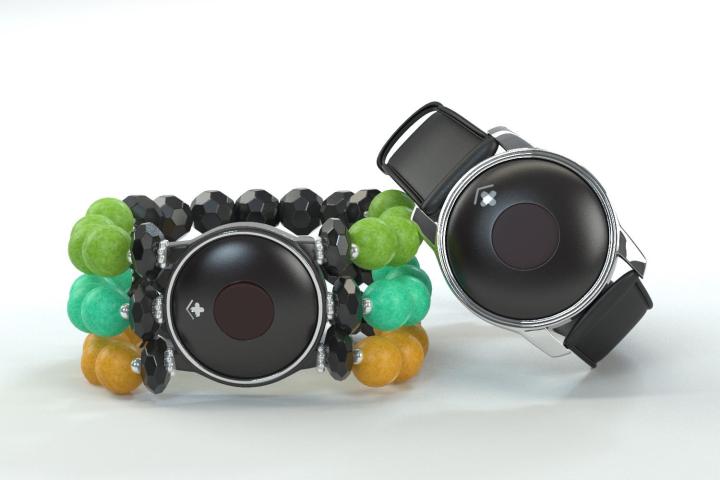
Heck, even our headphones are starting to get their own built-in heart monitoring. It’s a net positive, of course. After decades of technology being held at least partially responsible for the growing obesity epidemic, it’s great to see technology makers taking both figurative and literal steps to help us help ourselves to get in shape.
And while exercising more certainly has long-term health benefits, manufacturers are also looking to wearables to help tackle more serious health concerns. Below are some new types of wearables emerging.
Diabetes Wearables
Expect this space to take off in a big way over the next few years. Both Apple and Google are supposedly looking into diabetes tracking. Apple’s forthcoming iWatch (or whatever they ultimately call it) may even have glucose tracking functionality, according to patent applications filed by the company, and Google has been much more public by showing off contact lenses designed for the same purpose. Of course, if and when the products to hit the market, neither are likely to completely replace more invasive blood sugar monitoring. Still, anything that helps patients better track their levels is likely a good thing. And in the meantime, companies like Pancreum already offer standalone options for tracking that information.
Intel Parkinson’s Wearable
Intel has been looking at health monitoring in a big way, including last week’s recent announcement that it has joined forces with the Michael J Fox Foundation to develop a wearable aimed at tracking the degenerative effects of Parkinson’s Disease. Still in the early stages, the device is part of a large research study that uses data analytics to monitor symptoms like tremors, slow movements, and changes in sleep, coupled with self-reported data such as medication intake.
LifeKeeper
Unlike most of the standard heart rate monitors out there, the crowdfunded LifeKeeper is concerned with more than just tracking your beats per minute when you go for a jog. The chest-worn device is design to help detect early warning symptoms of serious health concerns that can lead to things like heart attacks and strokes. The accompanying app asks you to fill out some simple questions, provides reports on collected data over time and sends alerts and warnings to your connected smart device when something is amiss.
CarePredict Tempo
Technology, like youth, is wasted on the young. While seniors, for better or worse, tend not to be the first demographic technology companies look toward when launching new products, healthcare wearables certainly seem like the perfect fit for that under-addressed age group. CarePredict’s Tempo is a crowdfunded wrist-worn wearable designed with seniors in mind. The product doesn’t target any specific health concern, and instead focuses on its wearer’s well-being in general, tracking their patterns and notifying caregivers and family members when there’s a noticeable change in things like movement and sleep. The wearable interacts with room beacons placed throughout the home to let monitors know via smartphone is there’s been a major change.
Wearables for the Hearing Impaired
Head mounted wearables like Google Glass could one day benefit the hearing impaired, compensating for a lack of audio glues by offering up visual context information. But in the meantime, the solutions are more invasive. Take the Rondo Maestro CI, which combines an externally worn sensor unit and an internal implant that lives under the skin. The two elements are held together magnetically through the flesh. A microphone on the external sensor collects sound signals. The implant transmits the sounds as electrical impulses, bypassing the impaired parts of the ear and transferring them to the brain’s auditory cortex.
Wearables for the Visually Impaired
Microsoft is reportedly working on a device called the “Alice Band,” a headset with built-in receivers that detect data bounced off of potential hazards, in a manner not entirely dissimilar from echolocation. Then there are products like the Argus II Retinal Prosthesis System, eyeglasses with a built-in camera that captures visuals. That data is processed and set to an implant mounted on the eye, sending out small pulses, which stimulate retina cells, allowing visually impaired wearers to “see” patterns of light, thus helping them better detect their surroundings.
At the moment, fitness trackers like the Fitbit and Misfit are largely seen as self-motivating devices. But can all of that endless data have an impact on our healthcare beyond the day-to-day? Apple’s HealthKit app could certainly be seen as a step in that direction, with its aggregation of diverse data. The next step is the ability to offer all of that data in a meaningful way to healthcare professionals, an act that could be used to treat individuals with existing problems, or help with the early detection of those issues.
We’re still a ways off from providing clinically accurate health wearables to the masses, but it’s clear that they’re coming. The health movement is here, and it’s wrapped itself in wearables.
Editors' Recommendations
- The Fitbit Luxe helps you manage your stress levels — and look good doing so
- The best cheap fitness trackers of 2019


